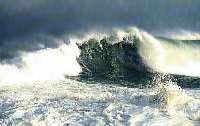
 |
Route 27 West Coast South AfricaR27 - Off the Beaten Track |
|
Explore Route 27 West Coast R27 Route 27 West Coast Towns Off the Beaten Track West Coast History Culture & History From Crayfish to Iron West Coast Map West Coast Explorer SA West Coast Tours/Recreation Nature Reserves Fossil Park Sea Tales & Wrecks Whale Watching Weskus Stories |
 Travellers who take the R27 (Route 27) and head in a north-westerly direction soon find themselves in that part of South Africa commonly known as the West Coast. Although the West Coast is a geographical area with known boundaries, it is primarily a particular landscape, a distinctive and unusual region with its own attraction, people and lifestyle. Travellers who take the R27 (Route 27) and head in a north-westerly direction soon find themselves in that part of South Africa commonly known as the West Coast. Although the West Coast is a geographical area with known boundaries, it is primarily a particular landscape, a distinctive and unusual region with its own attraction, people and lifestyle.Tourists from elsewhere in South Africa or abroad, who see the West Coast for the first time, usually have and initial impression of a wide open landscape with something dry and grey about it. The Atlantic laps invitingly against white beaches, but the water is freezing cold; in spring the veld and its wild flowers are almost overwhelmingly beautiful, yet this splendour lasts for only a few weeks before the countryside fades into greyness once again.
The Benguela Current is as nutrient-rich as it is cold, and its presence has shaped and influenced the region and its people in many unmistakable ways. There are only a few other places on Earth where winds and currents co-operate in this way to cause such upwellings of mineral-laden water from the depths of the ocean, supporting a wealth of marine life which is astounding in its diversity.
The unchanging conditions have allowed the vegetation to adapt unhindered to this habitat. The result of this slow development is the world-famous unique fynbos, consisting of an astonishing variety of different plants ina bewildering multitude of species, sub-species and local variants. The Floral Splendour of the West Coast, which attains its full splendour in Namaqualand is the result of the adaptation of flowering plants to the area's dry summers and cool, wet winters.
The wonderful water sports - angling, diving, sailing - hiking, the seafood and other local delicacies and the area's distinctive wines and fruits are all magnets, drawing the visitor back again and again to the West Coast. Once this part of the world has crept into your heart, it will never leave you...
Auther and photographs, sea & flowers: Cornel Truter, West Coast Tourist Guide
|